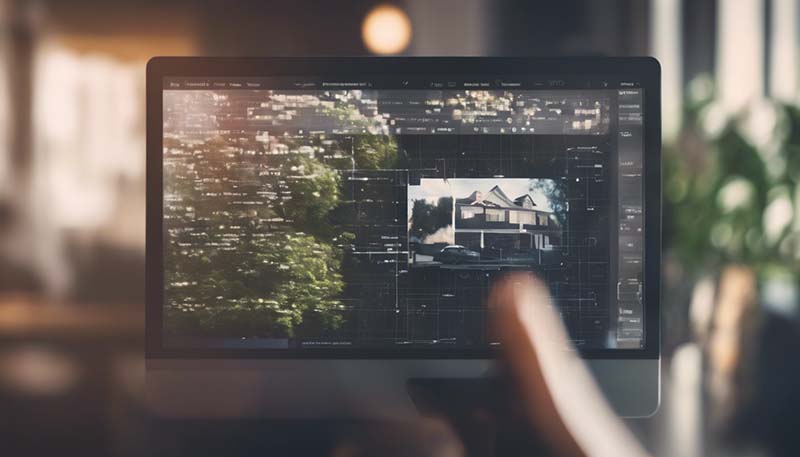Real Estate Tech: Programming for Property Management
The real estate industry, traditionally slow to embrace technological advancements, is rapidly evolving. The integration of technology in property management has led to more efficient and effective ways of managing assets. Programming for property management involves leveraging software development to automate various tasks, enhance tenant relationships, and optimize financial operations. This article explores the role of programming in transforming property management and the key technologies involved.
**The Need for Real Estate Tech**
Property management is a complex task involving leasing, maintenance, tenant relations, and regulatory compliance. The need for real estate tech arises from the following challenges:
1. **Scale of Operations**: As the number of properties under management grows, manual methods become inefficient.
2. **Data Management**: Handling and analyzing large volumes of data is crucial for informed decision-making.
3. **Tenant Engagement**: Modern tenants expect a high level of service and easy communication channels.
Advertisement
4. **Regulatory Compliance**: Adhering to ever-changing regulations requires robust systems.
5. **Cost Optimization**: Minimizing overheads while maximizing revenue is a constant goal.
**Programming for Property Management**
Programming plays a vital role in addressing these challenges through various applications:
1. **Property Management Systems (PMS)**: These are comprehensive tools that help manage the day-to-day operations of a property, including leasing, rent collection, maintenance requests, and financial reporting.
2. **Customer Relationship Management (CRM)**: CRM systems are used to track interactions with tenants, manage leases, and improve tenant retention.
3. **Building Automation Systems**: These systems allow for the control and monitoring of building systems like HVAC, lighting, and security, leading to energy savings and improved tenant comfort.
4. **Data Analytics**: Advanced analytics can help predict market trends, identify underperforming assets, and streamline operations.
5. **Mobile Applications**: Mobile apps for tenants can facilitate rent payments, maintenance requests, and communication with property managers.
**Key Technologies and Programming Languages**
Several technologies and programming languages are instrumental in developing real estate tech solutions:
1. **Web Development**: Languages like HTML, CSS, and JavaScript are used to create user interfaces for web-based property management systems.
2. **Backend Development**: Server-side languages such as Python, Ruby, Java, and .NET are used to build the logic and database interactions of a PMS.
3. **Database Management**: SQL and NoSQL databases like MySQL, PostgreSQL, MongoDB, and others are crucial for storing and managing property data.
4. **Mobile Development**: Swift for iOS and Kotlin for Android are used to develop mobile apps that serve as an extension of the PMS.
5. **Cloud Computing**: Services like AWS, Google Cloud, and Microsoft Azure provide scalable infrastructure to host property management applications.
6. **Internet of Things (IoT)**: For building automation, programming skills in IoT platforms like Arduino or Raspberry Pi can be beneficial.
7. **Machine Learning**: Python and R are popular for developing predictive models that help in forecasting and decision-making.

**Building a Property Management System**
Let's outline the steps to build a basic property management system:
1. **Requirements Gathering**: Understand the needs of property managers and tenants.
2. **System Design**: Create a blueprint of the system, including database schema and user interface design.
3. **Development**: Write the code to implement the system's features.
4. **Testing**: Ensure the system works as expected through unit testing, integration testing, and user acceptance testing.
5. **Deployment**: Deploy the system to a server or cloud platform.
6. **Maintenance**: Provide ongoing support and updates to the system.
**Challenges in Real Estate Tech Development**
1. **Data Security**: Protecting sensitive tenant and property data is paramount.
2. **Integration**: Integrating with other systems (e.g., payment gateways, utility providers) can be complex.
3. **User Adoption**: Encouraging users to adopt new technology can be challenging.
4. **Scalability**: The system must be able to handle growth in properties and users.
5. **Compliance**: Adhering to local and international regulations regarding data and property management.
**Future Trends in Real Estate Tech**
1. **Smart Home Integration**: Integrating property management systems with smart home devices for better tenant experience and energy management.
2. **Blockchain**: Using blockchain for secure and transparent transactions and property records.
3. **AI and Machine Learning**: Enhancing predictive analytics and automating decision-making processes.
4. **VR and AR**: Virtual and augmented reality for property tours and maintenance training.
5. **Sustainability**: Developing systems that promote and manage sustainable building practices.
**Conclusion**
Programming for property management is a dynamic field that offers numerous opportunities to streamline operations and enhance tenant satisfaction. As technology continues to evolve, property managers who embrace these advancements will be better positioned to succeed in a competitive market. The key to successful real estate tech development lies in understanding the needs of users, staying abreast of technological trends, and ensuring robust security and compliance measures.
 Real-World Examples
Real-World Examples 2024-06-29
2024-06-29 162 Comment
162 Comment